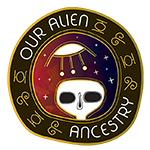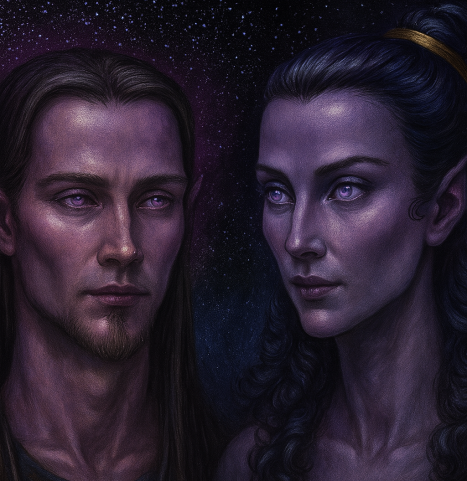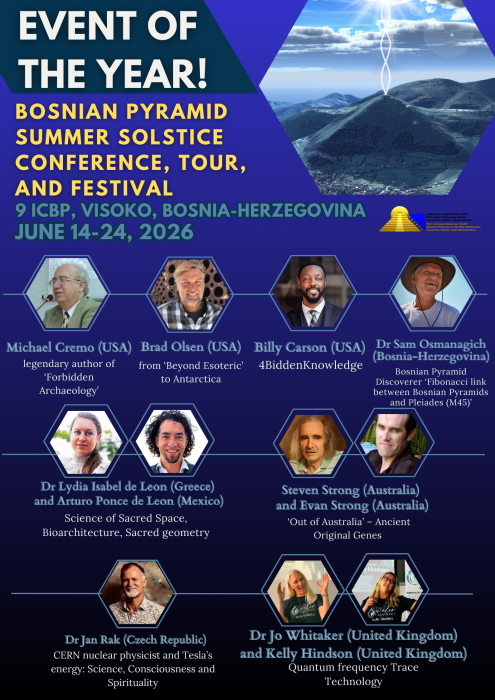
The Big Picture
Since posting the first article on Tracy’s tablet there has been a steady stream of criticism, sometimes verging on a torrent, decrying both the authenticity of the tablet and credentials of our claim that this document is a treaty marking an agreement between Original and ancient Egyptian people.
A common complaint relates to an observation noting how the positioning of certain glyphs is faithful to a set Egyptian formula used when creating funerary tablets. Those with doubts will point to certain times when changes in script and setting, which they assume took place somewhere in Egypt first, spread throughout the land to reinforce their objections to our proposition that the tablet is a treaty. The reality is that all of these references to past patterns and progressions in hieroglyphs most assuredly occurred, but as to where the inspiration was in most, if not all occasions, we claim the ‘jury is still out’ and should remain so until the Australian case is completed. Knowing, as we do, modern humans, spirituality, arts, notions like gender and species equality, along with all the hallmarks of noble behaviour began in Australia, the idea that the formal systems of writing is also part of the Original design is entirely consistent.

Back to the tablet and an observation passed in our previous article. There are six people given a name on the tablet, three are probably depicted to be laying inside each sarcophagus, two, Isis and Osiris are seated each side of the Ankh and the sixth member of this ensemble is mentioned, but never depicted. Are these the six people/Gods acclaimed as being responsible for negotiating and bringing to fruition this sacred accord between two nations? Or perhaps, the three fallen were from the first family that set up a structure in Australia and gained permission, and this document could be an accumulation of important players that spanned centuries? It may be the reason that Hor-Nakht was not engraved into the sarcophagus simply because he was alive when the document was formally presented and consented.
Allegations that this is some form of a latter-day copies fall short on many levels. All recent replica of the Stela of Senebef are lighter, smaller in height and width than Tracy’s tablet. In what only adds to its unique character, the cement/plaster is a mixture of many materials while all other replicas along with the original are made from one substance. As stated earlier, because of when this tablet was sealed off between the early convict walls, it cannot be a post-Cook import, all that remains relates to the meaning of this relic and sequencing of both the Egyptian stela and subsequent copies. Which came first, Tracy’s tablet or the Stela of Senebef, and of course the totally interrelated issue as to what function this document performed and the events chronicled, has to also be addressed.
Fundamental in resolving the narrative and nature of esoterics of the two tablets, is the establishment of precedent and/or principle influence. When it comes to the genesis of the written or engraved language, in the simplest terms, we believe ancient Egyptians came here with none or some and when they left they had much more than when they came. When we say ‘we’ believe, that pronoun and order of Egyptian novice tutored by an Original teacher is a rather recent addition to our understanding of Original dynamics and history solely due to Aunty Bev. Until Aunty Bev spoke about Egyptians for the first time which was recorded on a You Tube, Egyptians in Australia Part 2, we had never spoken of or were aware of the truth Aunty Bev first revealed. When speaking of the Egyptian presence and involvement in creating some of glyphs at Bambara which she confirmed, she threw an unexpected extension into the mix. According to Aunty Beve, before the Egyptians came, the Original people were already engraving symbols/hieroglyphs and had their own language.
That comment set us off on the course we now travel, and without her guidance I would have kept assuming whoever was involved in engraving the Bambara Glyphs, the only group that could definitely be ruled out were all past and present Original tribes. As radical as Aunty Bev’s statement may have appeared when she revealed this ancient truth, the recent re-appearance of Ros’ rock onto the scene will eventually be responsible for new theories on the evolution of first language spoken by modern humans. It is no coincidence that this intricately engraved rock was found on Dakinooong land, Aunty Bev’s tribal land, nor was it unexpected to find unchallengeable evidence of an ancient technology that can only just be matched today. Not only is the rock one of the hardest in this country and bears markings beyond the province of any steel blade of today, there is a structured arrangement of markings engraved into the surface that is not random and meant to convey meaning. Containing 51 lines, 56 points of intersections and 74 shapes and excavated from geology that affords a date running well into five figures, this rock is proof that the Original people were writing thousands of years ago using technology that only came onto the scene less than a hundred years ago.

Once again, Aunty Bev was right, and if the Original people were the first to write, along with so many other debuts, does it not make sense to assume this was one of the many teachings given by the Original teachers to their Egyptian students?
A bold statement to make, but before objecting through citing a bevy of experts, it must be pointed out that this claim made by an Original Elder of high standing is supported by quite a deal of archaeology. Irrespective of suggestions of fraud, fakery or other devious ploys ascribed, there are three pieces of archaeology containing Egyptian glyphs, and all of them were found in this country, not Egypt. The tablet has nearly 300 hieroglyphs from the Middle Kingdom dated at around 3,900 years ago, the three walls at Bambara have around the same number of symbols as the tablet and definitely bears clean passages of proto-Egyptian (along with the more ancient Original script) which is dated at between 5,000 to 4,700 years, and there is another collection of 15 hieroglyphs, again proto-Egyptian, and of the same older date. There are other sites we know of which are also works in progress, but what we do have is evidence of a span of 800-1,100 years and two different styles of hieroglyphs found at three different sites. As to the inspiration and location, well that is not as ‘cut and dried’ as most may assume.

“All the Same” (Big Bill Neidjie Original Kakadu Elder)
It’s not just us, there is absolutely nothing original in our belief that the Original culture and Dreaming was the source behind the ancient Egyptian obsession with the esoteric and the stars. One of the very first books we read that set on us on this path is an absolutely stunning reference book, but can be a tough read in parts.
Nevertheless, there is so much in accord with Original Old Ways and Lore in Robert Lawlor’s book Voices of the First Day, and is a book deserving of respect with an ample stocking of Old Way information. One of the focal themes addressed was the same Original-Egyptian interaction we are dealing with now, and just as it is in our case, Lawlor saw the same Original precedence. “The Egyptian religious practises, zoomorphic pantheon of gods, burial customs, concepts of death and rebirth, sorcery, magic and medicine all have their origins in the primal culture of the First Day.”
Throw in writing plus all the insights and discoveries already discussed and that is a full load and reasons enough for the Egyptians to sail so far and risk so much, and we suspect that is the real narrative immortalised on a tablet found in Australia.
The Observations of an Amateur
Guilty as accused, we are not professional academics, nor experts in any particular field, but we have plenty of advisers of the highest calibre and ample practise. Nevertheless, apart from spending days and days leafing through the pages of 3,010 hieroglyphs supplied in Ray Johnson’s proto-Egyptian handbook and a sprinkling of other references, we bring no academic training to this exercise. Despite our deficiencies we still have eyes, patience, Ray Johnson’s book and an acquired skill in mix and match, that, we have in abundance. Our goals are not ambitious, we are only seeking generalities and common themes not a literal account, but for some no matter how modest our goals and skills learnt on the job, our lack of appropriate training is an automatic disqualification from all academic games.
Moreover, by acknowledging an 800 year age span (or perhaps more) between the tablet and Bambara, differences in script are inevitable. Undeniably this is true, but we see this a bit like translating Shakespearean English, and in that respect there will be crossovers more often than not. And who is to say that the same transition in styles we see in Egypt was applicable in Australia, perhaps here they remained more faithful to the older form and accepted less change. Variations between countries and culture will evolve no matter how much there was a mystical concord, simply because one society is naked and nomadic the other clothed city-dwellers and farmers of the land.
Despite those hurdles and our limitations we do intend to provide commentary of the opening passage. By our tally there are 38 hieroglyphs in the section we studied, of which we found complete to partial counterparts in the proto-Egyptian manual on 32 occasions. A fair proportion are direct matches, and with a recognition rate of 84% we are confident some generalities can be tended for further consideration.

For us, knowing that all stages of Egyptian hieroglyphs are contextual, establishing an exact opening scene is of paramount importance in setting the tone and choices made as the narrative continues. Of the first four glyphs three are an exact match, in the case of the third glyph which we deduce to be a sacred book containing instructions and orders to facilitate this treaty gaining consent, we have taken some liberty when nothing else came close. The base line/rectangle is most probably a book, of that we are confident, but the staff extending from the middle of the book with a knob/circle on top is more difficult. The closest comparison was the proto-Egyptian glyph 2147, which is exactly the same but upside down, and since they are sailing to the ‘bottom’ of the planet where the waters spin in the opposite direction, we suspect this reversal is possible.
Put this together and we read this as “give,” King of Upper Egypt,” “book with instructions” and the “beginning” or “mission.” From our perspective this appears to be the beginning of something of some gravitus, a serious occasion necessitating royalty, gifts and a crusade or perhaps mission abroad.
As to where this destination may be, further down the first column is an enigmatic entry that we thought was without parallel until sighting it again in the first column of the tablet. We first saw this glyph on both walls at Bambara and it always had us intrigued, simply because the only entry in the manual that came remotely close has two crests, one at each end, while the glyphs on the walls have three peaks with the third one positioned in the middle. The two peaked variety is referred to as the “etheric region,” and we felt since this was a story about people and beings coming to this sacred land we assumed that the addition of a third peak referred to the land of Australia. Being a sanctuary where people lived in accord with Dreaming and, as Robert Lawlor so succinctly stated, in harmony with the Voices of the First Day, the idea this glyph was enhanced to represent the most holy of holy lands seems a fair call.
Just beneath the ‘etheric region’ is a glyph with which we have an exact copy in glyph 1877, (“white house, treasury”) perhaps this could refer to some sort of focal Egyptian building/embassy, which does seem likely as there is another less grand glyph that may represent a more basic dwelling further down this column. There is good chance the glyph for “throwing stick” (2450) sits below the simpler building, which of course, is very much an Australian icon and in keeping with the geography.
The top part of the second panel has also been scanned and compared, and again we will supply a brief report, which as before can be an account of standing in heaven or heaven on earth. “Lord” (2628) “person,” (2364) and “father” (1527) introduce some of the personnel on board or in attendance, who were warmly greeted upon arrival into this land as evidenced by the hieroglyph “I welcome you.” As to where these people/souls (ka) were journeying to, we run into the same issue of semantics.
Our interpretation, and to be honest we were surprised we were able to find any match like this and particularly something that was almost identical, of what is a seminal glyph can be read both ways. “The 3rd heaven where the beings are the masters of their own Ka,” can be interpreted as being heaven. However, on closer inspection it could more easily read as a place of esoteric wisdom where the “beings” as opposed to Gods, souls, spirits, half animal/human deities, the departed or any other descriptor of those on the other side, understand the nature of their soul while incarnated. The reason we are called human “beings” is to denote our species and that we are living and of flesh and bone. Beneath this glyph is the symbol of a plain rectangle, upon which is the custom of engraving/drawing a variety of motifs that denote the make or purpose of different boats, this proximity could suggest they sailed across the “horizon” in a boat to the “3rd heaven:” Australia.
Other glyphs beneath include “Lord,” “thee” “beseech,” “strength,” “chemical” and our selection from the second column concluded, somewhat symbolically, with “Serpent Goddess.” The Rainbow Serpent is the most potent Original spirit, and to see the hieroglyph representing ”beseech” nearby, is a portent for good mystical relations in this Original and Egyptian alliance, which after all is the main reason this alliance came about.
Tying up Loose Ends
There is one loose end of which we have just become aware, and in our defence was primarily due to our endemically poor mobile reception and me not having pen or paper due to miserable conditions.
All our early conversations with Tracy were on the mobile. No matter who we talk to it is well known our reception is utterly appalling. Whatever the weather, we have to stand outside and negotiate within one small circle where the reception is at best bad. All going reasonably, words can be heard sometimes, and bits and pieces are nearly always sufficient, but not in this case.
Our first conversation was an interesting pastiche of crackles fades and words, in what only added to our discomfort it was decidedly moist and windy standing in the open no more than two metres from shelter. Tracy was explaining how the tablet was found during a challenging gust and we later found out when she said “was to be Phillip’s farm” was lost in the fade out and was received as “was Phillip’s farm.”
This may seem a major issue, but it is a trifling and symptomatic of the horrid mobile reception we endure. The farm was offered to Phillip, but he turned it down in preference to a site at Parramatta, so the farm was then taken up by Sir John Jamieson. The dates of construction are almost identical and completed before the turn of the century, and all the issues raised still apply, all that changed is that the principle residence was at Penrith on the Nepean River. What Tracy has supplied is an attachment beneath her testimony detailing the site and archaeology.
http://www.ashadocs.org/aha/04/04_04_Connah.pdf
The crucial part of this discovery comes down to the moment of first discovery, everything revolves around the seconds before and after it was first exposed since being hidden. Having given the exact details as to where and when, and to make sure there are no more fine details with frayed edges due to a poor connection or a cloudburst, I have asked Tracy to explain exactly what happened as it was actually discovered, and the trail of misfortune once this archaeological treasure was reclaimed.
Over to Tracy
“Back in the late 80’s a friend of our family was doing some labouring on a property out off Mulgoa Rd, Regentville. There was some clean up and demolition work being carried out. As some old out-houses had become unsafe.
Knocking down a wall they noticed a slab in the wall cavity. Taking it out, the young labourer showed it to the boss not knowing whether to toss it. To which the boss said, “It’s rubble, chuck it out,” which he did.
Tossing it into the back of his ute, where it smashed. On his way to dump the building rubble he stopped at his home to get some lunch and again to a look at the slab. Finding it rather interesting, he tried to plaster it back together and screwed a hook in the back to try and hang it on a wall. It was too heavy and couldn’t be held on the wall.
A long while later he told me what he had found and brought it round to show me. I was intrigued and immediately started to try and get someone to look at it, to no avail. Subsequently again it was broken out in the backyard and our friend threw it into the rubbish bin. When he left, I was told he had thrown it in the garbage, so I ran outside to retrieve it.”
We had suggested to Tracy that we could cut down the last series of drops and mishaps to something like retrieving the artefact from the tip, which was what I originally thought she said during the wind, rain and intermittent reception. Such a take was still truthful, sanitised and less painful. Make no mistake we believe the Original spirits were involved in arranging circumstances and choosing the right people to be part of this, and we are lucky that despite the damage the artefact still remains in semi-tact. But it seems the poor thing was dropped so many times by people with good intentions and bad hand-eye coordination.
The tablet was more than likely fashioned in Egypt and brought here, that much is certain, whether a funerary tablet or treaty is in most ways immaterial. We begin with an agreed base, that the ancient Egyptians brought this tablet here. We also note the Khemit School have released some very convincing research showing evidence that establishes the authenticity of the Bambara hieroglyphs.
The Egyptologists involved make a very compelling point in showing how an arrangement of three signs is extremely unusual, yet grammatically correct, and totally beyond the capacities of a ‘deranged Yugoslav’ or any amateur 101 students. I really felt that point alone was the final nail in the hoax theory. As to whether all or some of the glyphs are proto-Egyptian, that is still to be decided. Knowing that the Original people had an ancient system of writing before the Egyptians first came, and that this is validated by Aunty Bev’s statement and Ros’ rock, as to whether the engravings are completely down to Egyptian hands and inspiration, from our perspective that seems highly unlikely.
The analysis of the plaster aggregate will reveal more, as will the readings of others we will approach. The tablet is Egyptian that is definite, as to what function it serves, we are certain it is a treaty. If it isn’t it makes absolutely no difference as it is a platform from which to debate, defend or deny. Either way the tablet according to texts and experts is not supposed to be in Australia, but it is, and that does make a difference.







